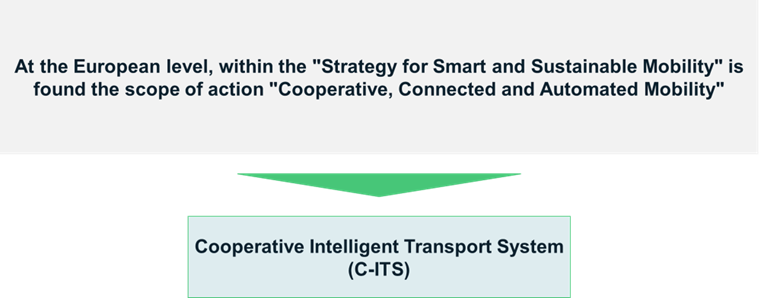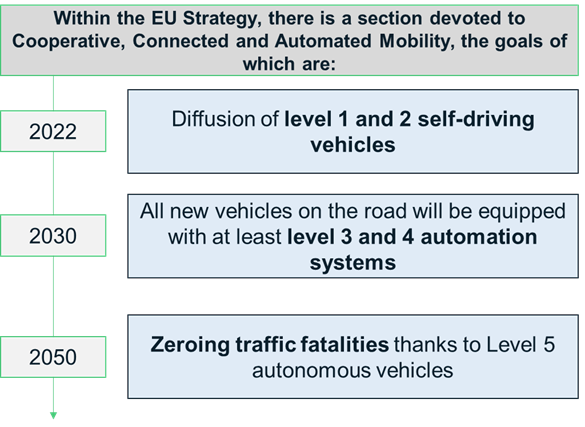The previous article in this series, also dedicated to an in-depth examination of regulatory issues, analysed three areas of reference at the European level with respect to the management and use of data (personal and non-personal, but related to the contexts of connected and smart mobility) and some aspects of competitive regulation with reference to platform business models and the realisation/offer of digital services.
The analysis highlighted some key aspects for the development of a new paradigm of connected mobility in which data and its exchange are central. In addition, the importance of the public actor and, with a view to maximising value creation opportunities, the need to define specific use cases in which to assess the position of the public administration – specifically, reference is made to cases in which the data exchanged are considered ‘personal’ – emerged.
In this article, three further aspects of legislation related to connected and smart mobility are discussed. In order to contextualise the narrative, the analysis starts with the founding element: the policy area ‘Cooperative, Connected and Automated Mobility’ (CCAM).

Figure 1 Analysis framework
The European Commission considers it essential to define an action plan that takes into account the increasing connectivity/automation of vehicles as determining factors in improving road safety. In its strategic planning, the European Commission envisages reaching level 4 automation in 2020 and level 5 in 2050. In the vision of the European Institution, by 2050, fatal road accidents will have been reduced to zero and an ecosystem of competitive and innovative mobility services will have been created, thanks to ad hoc regulations governing the exchange of data and the provision of such services.

Figure 2 Objectives of the European Strategy for Smart and Autonomous Mobility
Vehicle automation is one of the central elements in the mobility of the future, but along with it, it will be crucial to develop an ecosystem of interaction between vehicles and road infrastructure. In November 2016, an ad hoc strategy was defined, called ‘Cooperative, Infrastructure Transport Systems’ (C-ITS). The aim is to define the regulatory and operational aspects that will enable road users and traffic managers to share data and use it as input in the creation of new value offers.
In order to achieve the vision of zero accidents and to promote the creation of a European ecosystem of connected and autonomous mobility, the European Commission has chosen to define a number of regulatory instruments to be implemented uniformly throughout Europe. The first of these is Directive 2010/40 on the general framework for the deployment of intelligent transport systems in the field of road transport and interfaces with other transport methods. This Directive is considered a milestone for the development of connected infrastructure systems in Europe. Since 2019, stakeholders in the mobility ecosystem have been signalling the need to update Directive 2010/40 to cope with technological innovations and to regulate new opportunities for value creation.
Following a public consultation process and the involvement of trade associations at European level, the European Commission proposed an amendment to the Directive in December 2021 with the aim of accelerating the EU’s transition to a digital economy and improving the availability and interoperability of digital data in mobility services.

Figure 3 Priority areas within the revision of Directive 2010/40
Once fully implemented, the new directive would favour the creation of a connected infrastructure system that can improve traffic and mobility management, provide detailed information to road users, optimise the operation of public transport and fleet and freight management. In this way, in addition to achieving the objectives of increasing road safety, it will be possible to develop a more intelligent and interoperable transport system that will make it possible to manage mobility more efficiently and promote the development of new services.
At European level, the treatment of the Mobility-as-a-Service paradigm is found almost exclusively within the ITS Directive and its revision, described above.
In 2017, in line with the provisions of Directive 2010/40, a Delegated Regulation (2017/1926) was issued that provided for the creation of so-called National Access Points – i.e. digital interfaces where certain data and metadata can be accessed. In particular, this tool was used in order to provide static and dynamic mobility and traffic data with full compatibility and interoperability across entities, e.g. European transport service providers.
In the new ITS Directive document (Directive 2010/40 revision 2021), a section is devoted to mobility-as-a-service and multimodality offers. In this case, no legal acts have yet been issued, but the need to introduce regulations aiming at the standardisation of payment systems and data interoperability in order to foster the creation of a widespread and efficient Mobility-as-a-Service system is pointed out.
In addition to the contents of the ITS Directive, it is possible to identify some further regulations that define aspects of the Mobility-as-a-Service paradigm, mainly related to data. There are in fact regulations – e.g. Directive 2019/1024, Regulation 886/2013, Regulation 2019/1150 – that regulate the management and use of data held by the public actor, the exchange of data collected by city infrastructures and data exchange systems in a multimodal mobility environment.
A final regulatory aspect that we would like to point out, in line with OCTO’s Vision Zero, relates to road safety. As of 6 July 2022, the new ‘Vehicle General Safety Regulation‘ came into force, which introduces a series of mandatory advanced driver assistance systems to improve road safety and establishes the legal framework for the type approval of automated and fully driverless vehicles within the EU. According to the European Commission, “the new safety measures will help to protect passengers, pedestrians and cyclists across the EU, allegedly saving more than 25,000 lives and preventing at least 140,000 serious injuries by 2038“. With the entry into force of the new safety regulation, the European Commission will finally be able to complete the legal framework for autonomous and connected vehicles – new rules for type approval, testing and circulation of the new vehicle types are expected in the coming months.
“Technology is helping us to increase the safety level of our cars. New advanced and mandatory safety features will further contribute to reducing the number of fatalities. Today, we are also making sure that our rules allow us to safely introduce autonomous and driverless vehicles in the EU, within a framework that puts people’s safety at the centre,” Margrethe Vestager, Executive Vice-President for a Europe fit for the Digital Age
The definition of a regulatory framework that is increasingly complete and aligned with technological developments may enable the creation of a new ecosystem of connected and smart mobility. To this end, it will be essential to identify new methods of collaboration between actors, particularly between the public and private sectors, such as to encourage the exchange of data and the synergic development of new mobility services in a logic of co-operation.
The next article in this series will give an overview of the progress of the development activities of the 14 pilot projects of OCTO and The European House – Ambrosetti.
Author:
The European House – Ambrosetti